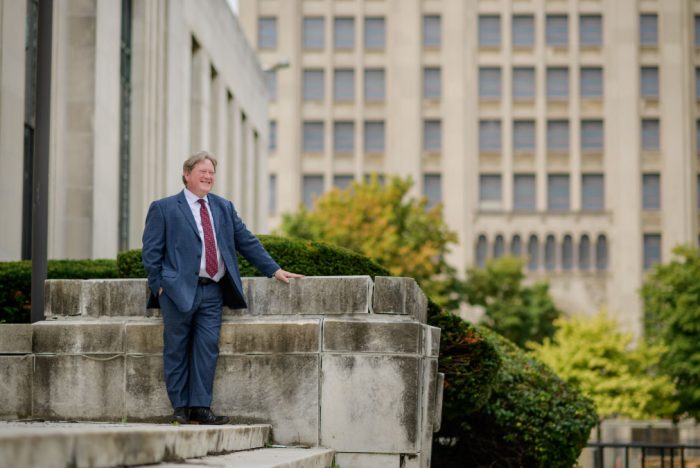
Maddin Hauser Wins Significant Victory for Client in Michigan Supreme Court
By Richard M. Mitchell, Esq., CPCU
Maddin Hauser recently won a case of important legal significance in the Michigan Supreme Court: Moore v Shafer Builders, et al. SC 161098 (June 30, 2021). The case focused on applying the “special aspects” exception to the open and obvious doctrine. The trial court granted summary disposition, but the Michigan Court of Appeals reversed. The Supreme Court then reversed the Court of Appeals and reinstated the trial court’s decision.
The Project
The case arose from a serious injury suffered by the plaintiff, a professional commercial roofer, when he fell from a flat roof on a construction project. The defendant was an industrial property owner who performed much of the work itself but contracted out the roofing work.
The defendant/owner had worked with the roofer it hired on previous occasions over several years. During that time, however, that individual was employed by another company. He had recently left that company and was on his own. The plaintiff was one of several individuals the roofer hired to work with him on the project.
The roofer hired previously had insurance coverage through his former employer. Once on his own, he allowed his coverage to lapse. Furthermore, he did not require his workers to be tied off or use other safety equipment on the roof. Instead, the plaintiff himself was the “caller” on the job. His task was to watch the other workers and notify them if they were getting too close to the edge. At some point during the construction, his coworkers noticed that he had fallen from the roof. There were no witnesses to the fall, and nobody could testify how it happened. The plaintiff was severely injured in the fall but survived.
The plaintiff brought suit against the defendant/owner, alleging responsibility for the plaintiff’s injuries under two theories. First, the plaintiff brought a claim under the “common work area” doctrine, as the owner had performed much of the project itself. This is an exception to the general rule that contractors are not liable for the negligence of independent subcontractors or their employees. The exception applies when: (1) the defendant failed to take reasonable steps within its supervisory and coordinating authority, (2) to guard against readily observable and avoidable dangers, (3) that created a high degree of risk (4) to a significant number of workers in a common work area. Ormsby v. Capitol Welding Inc., 471 Mich 45 (2004).
Anticipating a defense that the roof was an open and obvious condition, the plaintiff also alleged that the “special aspects” exception to that rule applied. That exception applies where a condition creates an “unreasonably dangerous” risk to another party, even if the condition is open and obvious. In this case, the plaintiff argued that to the defendant’s knowledge, actual or constructive, the contractor did not have insurance and was not using appropriate safety equipment, and created an unreasonable danger. In response, we argued that a flat roof on a summer day was an open and obvious condition. In Perkoviq v. Delacor Homes-Lakeshore Pointe, Ltd., 466 Mich 11 (2002), the court held that the owner or possessor of a property is not required to protect an invitee from open and obvious dangers unless the “special aspects” of a condition of the property applies, which it did not in that case. In Perkoviq, the condition was a sloped roof on an icy day, not a flat roof on a sunny day.
The Rulings
The trial court heard extensive arguments on the defendants’ motion for summary disposition. It held that the common work area doctrine did not apply, particularly in light of the number of workers on the project at the time of the injury. It also held that the “special aspects” exception to the open and obvious doctrine did not apply even if the defendant had knowledge of the contractor’s failure to use specific safety devices.
The Court of Appeals affirmed the trial court regarding the common work area doctrine. However, it reversed the trial court in a 2:1 opinion on the “special aspects” ruling. The Court of Appeals held that a question of fact existed as to whether the defendants’ knowledge or purported knowledge of the contractor’s safety protocol made the roof unreasonably dangerous.
On application for leave to appeal, the Michigan Supreme Court heard oral argument on the issue. After hearing that argument, the Supreme Court reversed the Court of Appeals and reinstated the trial court order granting summary disposition. The court held that this exception applies to a condition on the premises itself, in this case, the roof. The court noted that the plaintiff’s complaint did not allege that the failure to use safety equipment made the roof itself more dangerous. Consequently, the allegation was not that the plaintiff was injured due to a dangerous condition on the property but because of the failure to ensure the use of appropriate fall protection measures. Even if true, that failure did not make the actual condition of the property more dangerous.
Likely, the Supreme Court will more closely examine the application of the open and obvious doctrine in future cases. This case is significant because it clarifies the “special aspects” exception to that doctrine and how it may be applied in future cases.
